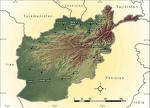Killing Civilians in Afghanistan is Terrorism

In Kabul, on the same day that Der Spiegel released photos documenting American soldiers posing with the bodies of civilians they murdered, the Transitional Justice Coordinating Group (TJCG), the umbrella organization for NGO’s in Afghanistan that are pursuing transitional justice, gathered Afghan, Australian, American, and German peacemakers to discuss methods to bring peace and security to Afghanistan. The photos present the grim reality that this conflict is characterized by civilian killing and violence.
In 2001, the American led ISAF (International Security Assistance Force), a coalition of the richest nations in the world, began military operations in Afghanistan in response to the 9/11 killing of civilians in New York and Washington. The purpose of the operations was to fight terrorism and seek reprisal for the Taliban’s harboring of Al Qaeda. The operation has turned into a near decade long war on one of the poorest nations in the world.
After nearly ten years of war Afghanistan is mired in terror, brutality, and a security situation that is worsening. Among Afghans there is growing consensus that the ISAF is pursuing military measures, such as the formation and arming of independent local militias under the banner of the “Afghan Local Police” against the wishes of President Karzai and the Afghan people, which undermine the prospects of peace in the future and further endangers ordinary people. However, it is the killing of civilians by American military personal and mercenaries that most enflames the conflict and expands the rift between ISAF and the Afghan people.
Most Westerners are familiar with the thousands of American civilians killed 9/11, some people know about the atrocities committed by the armed opposition groups in Afghanistan, and even fewer people are familiar with the stories of Afghan civilians killed by ISAF forces. Some of the recent civilian killings by ISAF, primarily composed of American forces include: 2children in Kunar province on March 14, 9 children collecting firewood in Kunar province on March 1, five civilians including two children who were searching for food in Kapisa province on February 24, 22 women, 26 boys, and 3 old men in a raid on insurgents in Kunar province on February 17, 2 civilians were killed and one injured while traveling in a van in Helmand province on February 3.
As the fallout from the Der Spiegel photos continues to be felt around the world, ISAF and the other belligerents who have publicly stated their objective is to prevent terrorism need to recognize that the killing of civilians whether by Taliban, mercenaries, militias, insurgents, or by soldiers of a nation is terrorism.
Kennelly is the Associate Director of the Marquette University Center for Peacemaking and is participating in the peacemaking efforts organized by the Afghan Youth Peace Volunteers and Voices for Creative Nonviolence. He writes from Kabul, Afghanistan. He can be contacted at [email protected]

